-
Sankara Mathas in Trichur, Kerala
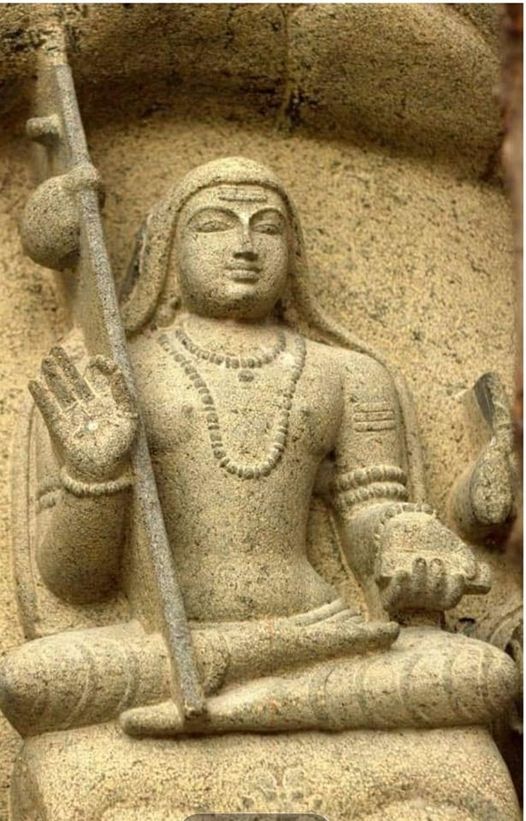
“The Cochin State Manual” gives the information that some Mathas tracing their origin to the direct disciples of Sri Sankarācārya such as Sureswara and Padmapada, with Namboodri Sanyasins as their Heads are found in Trichur in Kerala.
Outside Trichur there is a Namboodri Sanyasi Madam called Tirukekka Madam which is also said to have been situtated originally at Trichur. One of them is called Naduvile (Central) Madam. One of them has been converted as Brahmaswa Madam, i.e., Vedic Centre for Namboodri Brahmins.
Professor K.Rama Pisharoti, M.A., in an article on “The Age of Sankara in the Light of Kerala Legends”: published in The Hindu, dated July 14th 1932, states that these Mathas might not have been established at the time of Sri Sankara, that it was likely that, even before Sri Sankara’s time, these places were traditional centres of Vedic learning and that Sri Sankara converted them as his Mathas.
But he confirms the tradition that the direct disciples of Sri Sankara were the first Presidents of these mathas.
This opinion, that Sri Sankara converted such institutions of saintly scholars which existed before His time as monasteries to foster His Advaita philosophy, finds an echo in a work called “Kānchi Māhātmyam” (printed in Karvetnagar during the last century) which states that Devi, Kamākshi, the Presiding Deity of Kamakoti Peetha, was worshipped by yatis. “उपासते मनस्येवं भूमौ काञ्च्यां यतीश्वराः॥”
(काञ्चीमाहात्म्यम्, अ. ३१.)
-
GANAPATYAM … 3
Shodasa Ganapati Shrine in the Sri Kanchi Kamakoti Peetam Jagadguru Pujyashri Shankaracharya Swami Srimatha, Rameswaram :
Ganapati being the embodied Primordial Sound of Pranava, all the letters 51 in number-are His manifestations; and we have 51 forms of Him (अकारादिक्षकारान्त महा सरस्वतीमय – Sahasranama).
Here we have very close affinity with the Sakti-Religion which also speaks of all varnas as the Divine Mother’s manifestations, in fact their very name is Matrka.
Out of these 51 forms, 32 are singled out for special worship: namely,
1. Bala Gana pati,
2. Taruna Ganapati,
3, Bhakta Ganapati,
4. Vira Ganapati,
5. Sakti Ganapati,
6. Dhvaja Ganapati,
7. Siddhi Ganapati otherwise called Pingala Ganapati,
8. Ucchishta Ganapati,
9. Vighnaraja Ganapati,
10. Kshipra Ganapati,
11. Heramba Gana pati,
12. Lakshmi Ganapati,
13. Maha Ganapati,
14. Vijaya Ganapati also called Bhuvanesa Ganapati,
15. Nrtta Ganapati,
16. Urdhva Ganapati,
17. Ekakshara Ganapati,
18. Vara Ganapati,
19. Tryakshara Ganapati,
20. Khsipra Prasada Ganapati,
21. Haridra Ganapati,
22. Eka Danta Gana pati,
23. Srshiti Ganapati,
24. Uddhanda Ganapati,
25. Rna-mochaka Ganapati,
26 Dundi Ganapati,
27. Dvimukha Ganapati,
28. Trimukha Ganapati,
29. Simha Ganapati,
30. Yoga Ganapati,
31. Durga Ganapati and
32. Sankatahara Ganapati.
Even among these 32 forms, the first 16 are said to confer the highest bounties and they collectively go by the name “Shodasa Ganapatis.”
It speaks volumes of the Grace of Jagadguru His Holiness Sri Chandra sekharendra Sarasvati Sri Padah, that he has installed these sixteen Ganapatis, two in each corner of an octogonal mantapa of chariot shape, in the Ramesvara Sankara Mandapa, which is an epitome of all the wealth that our Vedas and Puranas contain.
In the vimana of this mandapa are also depicted sages deeply devoted to Vignesvara, like Ganaka, Mudgala, who are the Rshis for Ganapati mantras. Here there is also a replica of the Gavaksha (window) of Tiruvalanchuzhi, which is spoken of as one of the four inimitables of our temple archi tecture. Centrally amidst the Shodasa Ganapatis is
installed a Ganapati who faces the seas-Thus a ‘gana’ of Ganapatis (a Host of the Lord of Hosts) is installed here!
– Sankarakinkara – Sankara And Shanmata (1959)

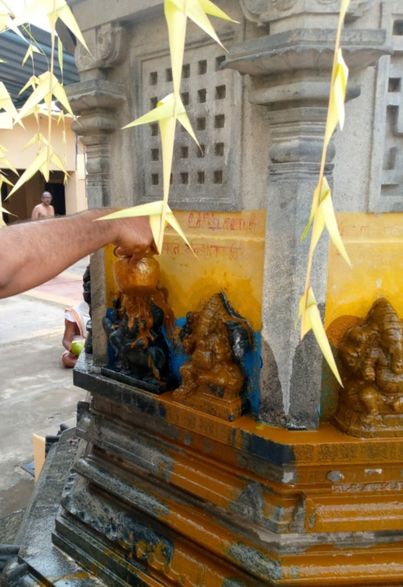

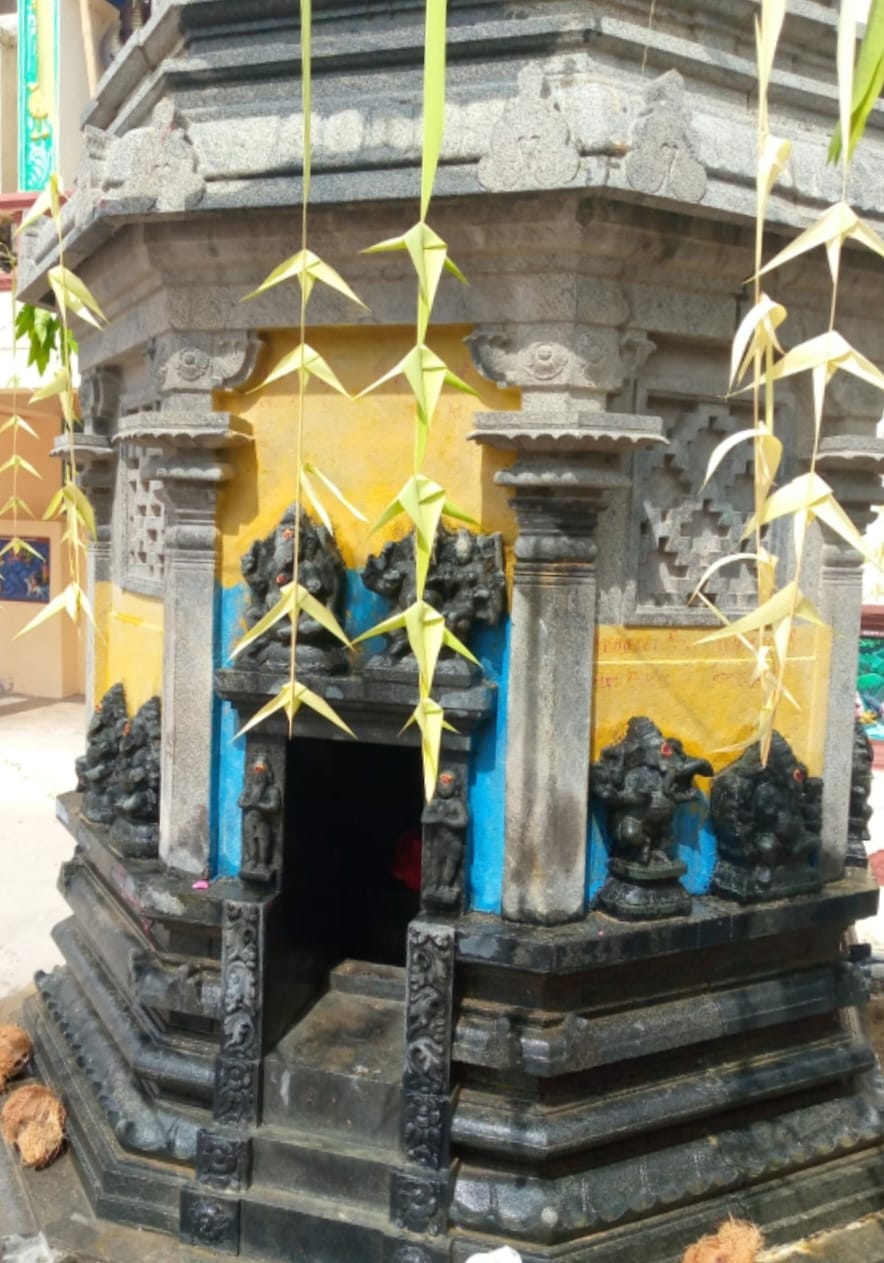
-
GANAPATYAM .. 2
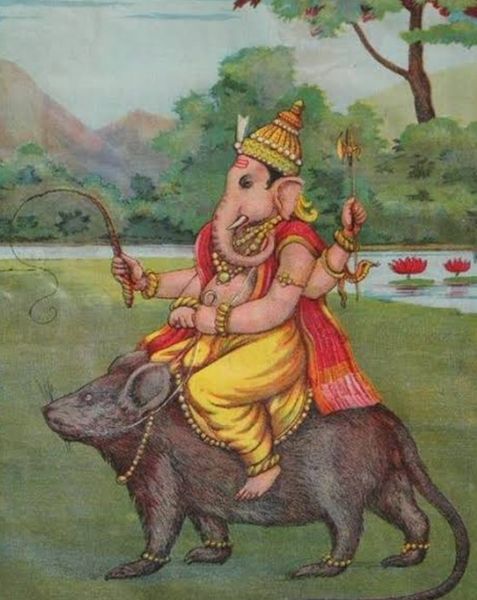
“Anandagiriya Sankara Vijayam” unmistakably dwells on the fact that Sankara re-established Ganapatya as one of the Shan-matas.
In the 71st prakarana, it is stated that when Sankara once for all took his abode in Kanchi, he sent out Girijakumara to spread Ganapatyam throughout the land; and that Girijakumara did accordingly and reported to Sankara the success of his mission.
Ganapati again, is one of the five deities worshipped in the Panchayatana Puja prescribed by Sankara.
The great Ganapati Pitha of Morgaon-Shri Yogindra
math-considers Shri Sankara Bhagavadpada as one of the Yugacharyas of Ganapatyam along with
Ganaka (Krta of Yuga),
Mudgala (Treta Yuga),
Bhrgu and Veda Vyasa (Dvapara Yuga).
Sri Sankara Bhagavadpada is referred to as Ganesa Acharya of Kali Yuga.
– Sankara Kinkara, Sankara And Shanmata (1969)
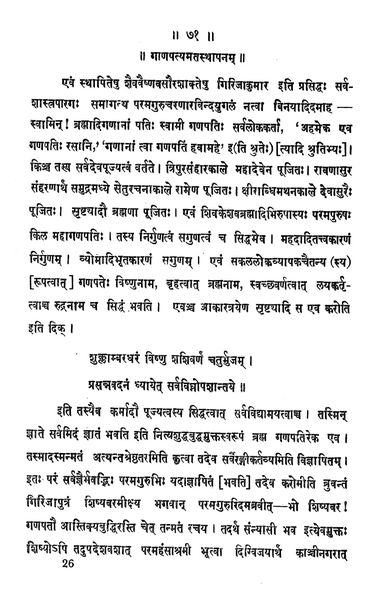
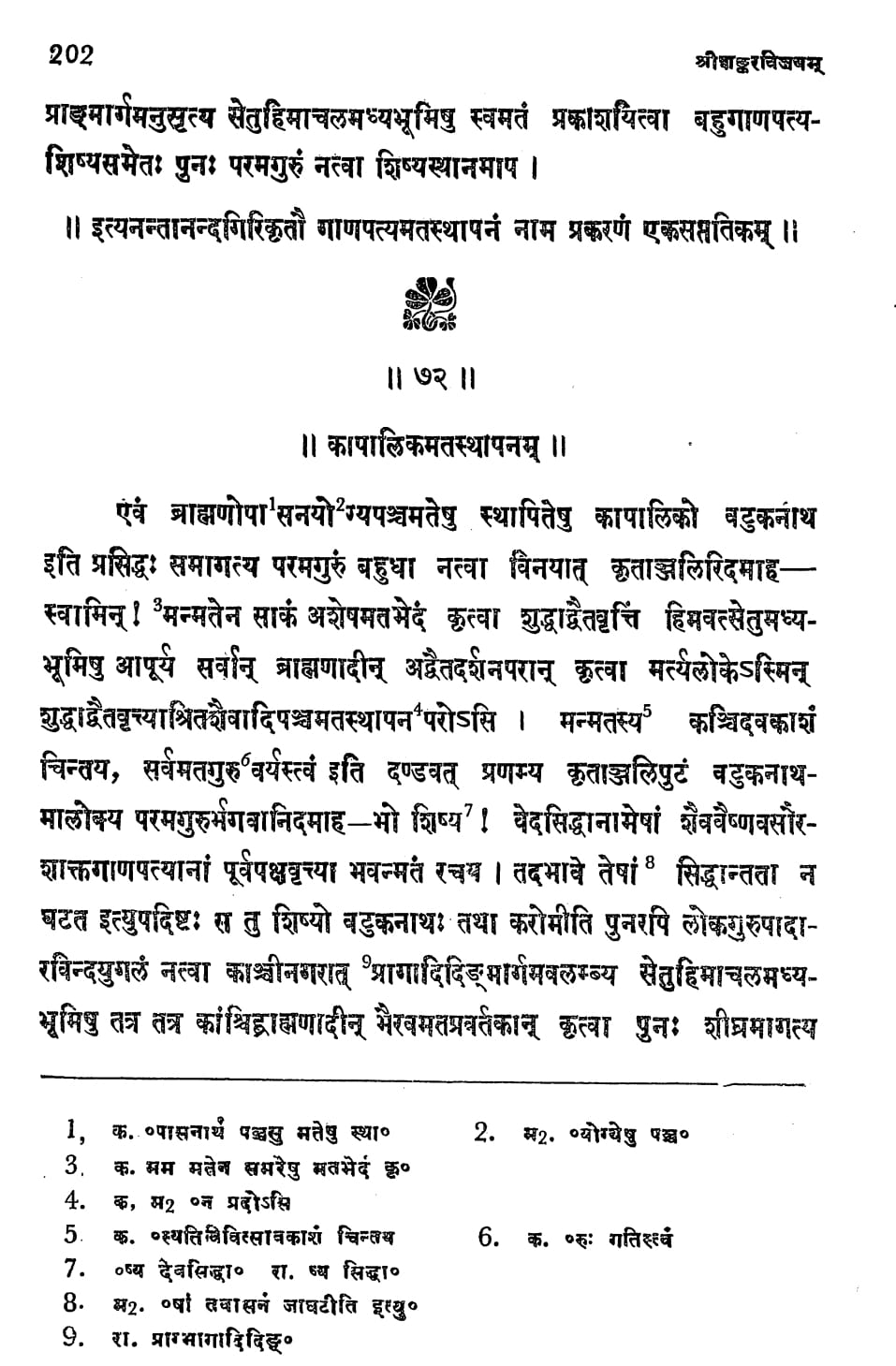
-
Sankaracarya
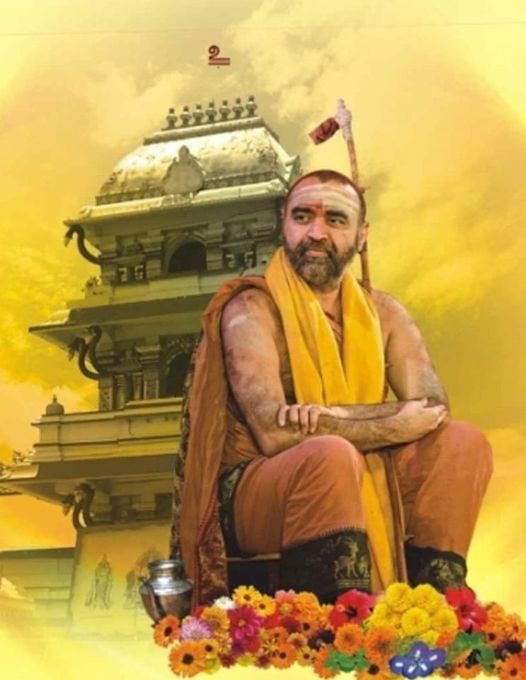
In the case of the Sankarite Institution at Kanchi where Sankara spent the last lap of his earthly career, according to at least seven important literary works giving information about the life story of Sankaracarya, it seems that only recently the name of Kanchi has been tagged.
Looking back at the history of this institution of the recent and remote past, it is learnt that successive heads of this Sankarite Institution have been known only by the name ‘Sankaracarya’.
In the case of other mutts it is found that they are referred to along with the name of the locality wherein the particular Mutt is situated, as for instance the ‘Puri Mutt’, ‘Vanamamalai Mutt’ etc.
In almost all old records pertaining to the Sankara Matha a Kanchipuram, the Mutt is noted simply as ‘Sankaracarya Mutt,’ and the heads of this institution as Sankaracaryas’. Some instances are given below:
1. A copper-plate grant of Vijayaganda Gopala (Andhra Chola ruler) of 1111 A.D., offering lands in the village of Ambi (near Kanchi), to the head of the Sankaracarya Mutt at Kanchi mentions the grantee only as ‘Sankararya Guru’.
2. A copper-plate inscription of the Government Museum, Madras of 1455. A.D., recording the transfer of some rights in the temple at Tiruvotriyur (near Madras), refers to the transferee simply as ‘a camp-follower of Sri Sankaracarya.
3. A firman issued by Daud Khan, a top-ranking officer of the Moghul Court, dated in the 24th regnal year of Padshah Alamgir, (firman renewed twice subsequently and reported in the Historical Records Commission – Vol. xxii pp.72, 73), granting land in circa Dhar Dhara, in the Carnatic province, to the then head of the Badkara Mutt at Kanchi, speaks of the grantee only as ‘Sankarācārya Gossain.”
S. A copper-plate inscription of Vijayaranga Chokkanatha Nayak King of Madurai, dated 1708 A.D., makes mention of land offerings and of rice etc., in favour of the Mutt (existing from olden times’) at Jambukesvaram (near Tiruchirapalli), belonging to the Sankara Mutt at Kanchi. The lands granted are in the villages of Mahendramangalam, Gopalasvami – thottam, Krishnapuram, Karakkadu, Kondayampettai, Mangamambapuram, Ariyur and Ariyamangalam – all in the Tiruchirapalli district (Tamilnadu). The name of the swami of the Mutt is stated in the grant as ‘Lokaguru Sankaracarya Svami.
5. A firman issued by the Nawab of the Carnatic, in Hijri 1188, conveys an order to the Officials of Subas, to afford safe passage, without collecting tolls, for two camels proceeding from Bunder, the animals having been noted as belonging to ‘Sankaracarya Mutt, without any specification.
6. An order of the English East India Company to the officials of the Company, regarding the tour of the Head of the Mutt (dated in April 1792 A.D.), refers to the Acarya only as ‘The Great Guru Sankaracarya s’vāmi.”
7. A report by Babu Rao, Mahratta Translator, to Colonel Mackenzie, dated 8th & 9th May, 1817. A.D., speaks of the Acarya of the Kanchi Sankara Mutt (who has been met by the translator at Kumbakonam), as the Chief priest of Sankarachari.’ (vide Mackenzie’s Collections by Wilson – 1828- pp. 263, 264).
The evidences given above, prove that the Sankarite Institution at Kanchi has been noted as the Institution of Adya Sankaracarya and his successors in that institution have been and are known to the rulers and people of different times and climes, by the name ‘Sankaracarya’, after the name of the illustrious founder pontiff.
– D. Ramanathan Chettiar
-
GANAPATYAM.. 1
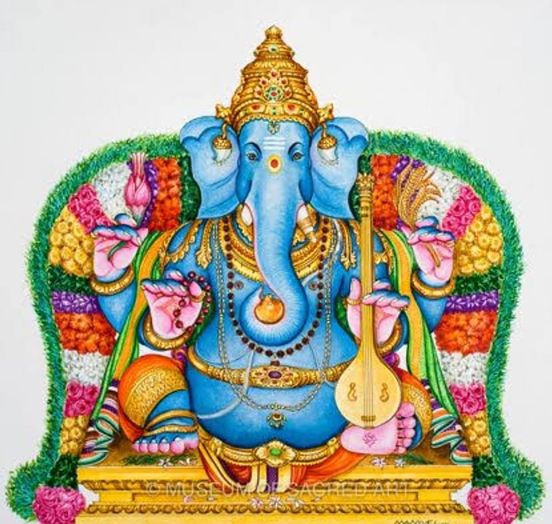
Ucchishtha Ganapati Sahasranama and Shankarabhagavatpada
Sri Sankara Bhagavatpada who was immersed in the realization of Oneness with the Supreme, was a great devotee of all the various manifestations of God-head. We see him as the great Ganesh-Bhakta in his Pancha-ratna and Bhujanga on Vinayaka…
In the Sahasranama of Ucchishta Ganapati (also referred to as Guhyanama Sahasraka or the thousand esoteric names) we see Ganapati referred to as the custodian of all the six amnayas of the six maths of Sankara, five of them established in the ter restrial plane, while the sixth belongs to the domain of pure spirit.
The five maths and amnayas are referred to in the following namas (328-337):
कामकोटीपीठवासः, शङ्करार्चितपादुकः, ऋश्यशृङ्गपुरस्थः, सुरेशार्चितवैभवः, द्वारकापीठसंवासः, पद्मपादार्चिताङ्घ्रिकः , जगन्नाथपुरस्थः, तोटकाचार्यसेवितः, ज्योतिर्मठालयस्थः, हस्तामलकपूजितः । and again namas (776-780):
तोटकाचार्यसन्दिष्टपूर्वाम्नायकमन्त्रकः ।
सुरेशसमुपादिष्टदक्षिणाम्नायमन्त्रकः ।
पद्मपादसमादिष्टपश्चिमाम्नायमन्त्रकः ।
हस्तामलक सन्दिष्टोत्तराम्नायकमन्त्रकः ।
शङ्कराचार्यसन्दिष्टोर्ध्वाम्नायाखिलमन्त्रकः ।
– Names which very clearly record that Sri Bhagavatpada established Maths at Kanchi, Sringagiri, Dvaraka, Jagannathapuri and Badari, putting them respectively in charge of himself and his disciples, Suresvara, Padmapada, Totaka and Hastamalaka.
It is also of significance that Ganapati is said to be extolled by all the mantras (Akhila mantrakah) in the Kamakoti Peetham. While each of the other Mathas has one of the four Mahavakyas, Kamakoti has all the four of them.
Later in this Sahasranama, the five pithas are said to signify the five acts of the Lord and Kamakoti in this scheme is the special seat conferring the grace of Liberation (Urdhvamnaya mantroghair anugraha prakasakah).
Guhyanama Sahasraka also speaks of the five Lingas that Sankara got from Siva
विद्याभोगयशोमोक्षयोगलिङ्गप्रतिष्ठितः ।
The names of the five Lingas are given as Vidya, Bhoga, Yaso, Moksha and Yoga Lingas.
In the traditional biographies of Sankaracharya, we have the names Muktilinga and Varalinga in place of Vidyalinga and Yasolinga. Mukti being none other than Moksha the nomenclature of Guhyanama Sahasraka seems more acceptable.
This Sahasranama, occurring in the Uddamarmesa Tantra, one of the 64 tantras, is imparted only to those who have touched the very end of Tantra Upasana. What appears gross and obscene in it, is in reality a symbol of Supreme Enjoyment of Bliss. That is why the layman is not initiated into it. At a very modest estimate, this Sahasranama should have attained its high status at least some four centuries back, since we come to know that the great Sakta of revered memory, Sri Chidanandanatha, is the eighth in the succession of disciples of one of the schools of Ucchishta Ganapati Upasana.
It is of particular interest to know that Shri Sacchidananda Sivabhinava Nrsimha Bharati Sankaracharya Svamiji of Shri Sringeri Peetha was deeply drawn to this Sahasranama.
Sankara’s devotion to Ganapati was very great. When he found the Goddess Akhilandesvari of Tiruvanaikka radiating a fierce aspect that common people could not stand, he not only drew that fierce aspect in the Sri Chakras to be placed in Her ears, but also installed an image of Ganapati in front of Her; because he knew the immense love that Ganapati’s presence would evoke in the Divine Mother.
Fittingly, the Kamakshi temple, which is intricately interwoven with the Kamakoti Peetha, contains a number of images of Ganapati, each with a different name. In his Pentad on Devi, Sankara prays to Kamakshi in each stanza; ” Let the Goddess residing in this Ambapura, mother of Ganapati, protect me” (Mam Ambapuravasini Bhagavati Heramba Mata avatu). It implies that he is entitled to the Divine Mother’s love in an equal measure with Ganapati, beloved of her.
– By Sankara Kinkara – Sankara And Shanmata (1969)
